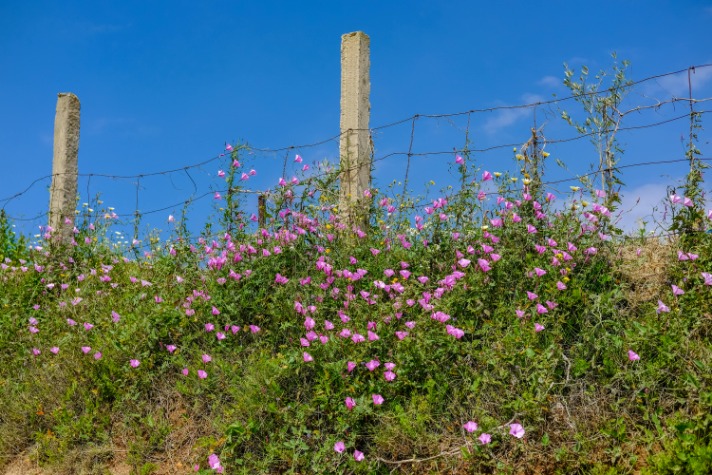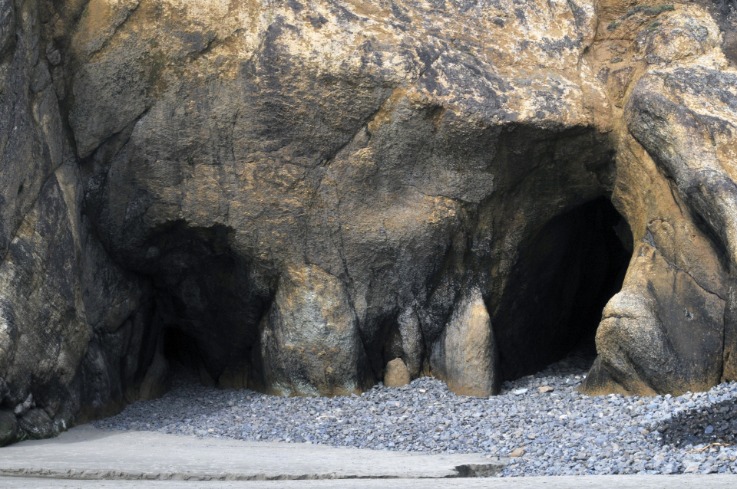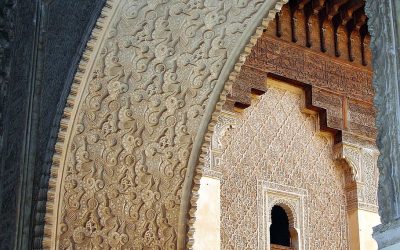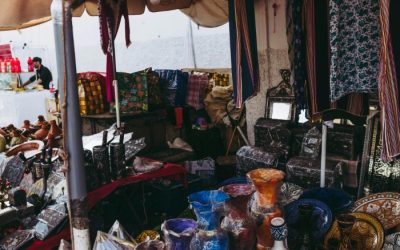Geographical Location and Accessibility
The Caves of Hercules in Morocco are a renowned natural attraction located near the city of Tangier, offering visitors a fascinating blend of history and natural beauty. Accessible via well-connected roads and close to major transportation hubs, the site is easily reachable for travelers exploring northern Morocco. Its strategic location allows for convenient visits from nearby cities and regions, making it an ideal destination for those interested in exploring the country’s unique geological formations and cultural heritage.
Position within Morocco
The Caves of Hercules are situated near the coastal city of Tangier in northern Morocco, offering a strategic and scenic location alongside the Atlantic Ocean. This proximity to the Mediterranean Sea provides easy access for visitors traveling from nearby cities and international destinations. The caves are well-connected by major roads and are accessible by car, with clear signs guiding visitors to the site. Their position within Morocco places them in a region rich in history, culture, and natural beauty, making them an important attraction accessible to both local and international tourists.
Proximity to Tangier and Major Cities
The Caves of Hercules in Morocco are situated near the northern coast, close to the city of Tangier, making them easily accessible for visitors traveling from major Moroccan and international destinations. Their strategic location along the Mediterranean coastline allows for convenient transportation options by road and sea. The site is just a short drive from Tangier’s bustling port and urban centers, facilitating smooth travel arrangements. Additionally, the caves are within reasonable distance from other major cities such as Tetouan and Ceuta, enhancing their accessibility for tourists exploring northern Morocco. This proximity to prominent cities ensures that visitors can combine cultural, historical, and natural experiences during their visit to the caves.
Directions and Transportation Options

The Caves of Hercules in Morocco are located near the city of Tangier, situated along the Atlantic Ocean coastline. This iconic site offers stunning views and easy access for visitors exploring the region. To reach the caves, travelers can drive from Tangier city center, following signs toward Cap Spartel, where the caves are situated just a short distance from the lighthouse. Public transportation options include local buses and taxis that operate regularly between Tangier and the nearby coastal areas. Once at the site, visitors can enjoy guided tours that offer insight into the caves’ legendary significance and natural formations. The accessibility of the caves makes it a popular destination for tourists interested in history, geology, and scenic coastal views.
Historical and Cultural Significance
The Caves of Hercules in Morocco are not only a stunning geological formation but also a site of rich historical and cultural significance. These caves have witnessed centuries of legends, local traditions, and historical events that highlight their importance to Moroccan heritage. Exploring their depths offers a glimpse into the ancient stories and cultural identity that continue to shape the region today.
Legend and Mythology Surrounding the Caves
The Caves of Hercules in Morocco hold a profound historical and cultural significance, embodying ancient legends and mythologies that have been passed down through generations. These caves are believed to be linked to the mythical hero Hercules, with local lore suggesting that he rested here after completing his twelve labors. The site is often regarded as a symbol of strength, resilience, and ancient wisdom, reflecting the rich history of Berber and Phoenician civilizations that once inhabited the region. Over centuries, the caves have served as a sacred site for rituals, as well as a natural beacon attracting travelers and explorers eager to connect with Morocco’s mythic past.
Mythologically, the caves are associated with the legendary Twelve Labors of Hercules, particularly the quest involving the containment of the monstrous Nemean lion. Some stories depict the caves as the gateway to the mythic underworld or as a place where Hercules sought refuge and strength. Local legends also tell of spirits and supernatural beings residing within the caves, adding an aura of mystery and spiritual significance. These stories have helped to elevate the Caves of Hercules from mere geological formations to symbols deeply embedded in Moroccan cultural identity, inspiring countless stories, traditions, and artistic representations throughout history.
Historical Records and Archaeological Discoveries
The Caves of Hercules in Morocco hold a profound historical and cultural significance, serving as a symbol of ancient maritime navigation and local mythology. These caves are believed to be linked to legends of Hercules, reflecting the rich folklore of the region. Throughout history, they have been a site for cultural rituals and a point of interest for explorers and travelers, contributing to Morocco’s historical narrative. Archaeological discoveries within the caves have uncovered artifacts and inscriptions that offer insights into early human activity and regional history.
Historical records from various periods mention the caves as notable landmarks, highlighting their role in trade routes and regional storytelling. Archaeological excavations have revealed relics dating back thousands of years, including pottery shards, fossils, and tools, indicating the presence of early inhabitants and their adaptation to the coastal environment. These findings help build a comprehensive understanding of the area’s prehistoric times and its significance in human history.
Role in Local Community and Traditions
The Caves of Hercules in Morocco hold a profound historical and cultural significance, serving as a symbol of ancient mythology and local heritage. These caves are believed to be linked to Greek legends, particularly the myth of Hercules, adding a mythic dimension to their importance. Over centuries, they have been a site of cultural reverence and storytelling, reflecting the rich history of the region. The caves also symbolize Morocco’s diverse historical influences, blending indigenous Berber culture with external mythologies. Their presence continues to inspire local legends, contributing to a sense of identity and cultural pride among residents and visitors alike.
The Caves of Hercules play a vital role in the local community by attracting tourism and fostering economic activity. They are a popular destination for tourists, offering a glimpse into Morocco’s ancient past and natural beauty. Additionally, the caves serve as a gathering place for local events and celebrations, strengthening community bonds. Traditional practices and storytelling about the caves are passed down through generations, keeping local customs alive. Their significance extends beyond their physical presence, acting as a cultural cornerstone that unites people through shared history, legends, and communal pride.

Geological Formation and Features
The Caves of Hercules in Morocco are a remarkable geological formation that showcases the natural beauty and complexity of Earth’s processes. These caves, carved into limestone cliffs along the Atlantic coast, feature a diverse array of geological features such as stalactites, stalagmites, and intricate rock formations. Their unique structure offers a fascinating glimpse into the region’s geological history and the powerful forces that shaped the landscape over centuries.
Formation Process of the Caves
The Caves of Hercules in Morocco are a remarkable geological formation with a rich history and distinctive features. These caves are located near Tangier and are believed to have formed over thousands of years through natural geological processes. The caves are notable for their unique shape, size, and the mythological significance attributed to them by local legends.
The formation process of the Caves of Hercules involves a combination of tectonic activity, erosion, and karstification. Initially, the region’s limestone deposits were uplifted and fractured by tectonic forces, creating cracks and fissures. Over time, water from rain and underground springs percolated through these cracks, gradually dissolving the soluble limestone and enlarging the openings. This process, known as chemical weathering, resulted in the development of extensive cave systems. Additionally, wave action from the Atlantic Ocean further shaped the coastal features, eroding the softer parts of the limestone and creating natural arches and openings that are characteristic of these caves.
Key geological features of the Caves of Hercules include large entrances, stalactites and stalagmites inside the caves, and the famous “Gate of Hercules,” an opening that resembles a map of Africa. The overall landscape reflects the dynamic interaction between natural erosional forces and the geological makeup of the region, making it a significant site for study and tourism.
Physical Characteristics and Dimensions
The Caves of Hercules in Morocco are a historic and geological marvel located near Tangier. These caves are formed through natural processes of erosion and sedimentation, revealing ancient rock formations that have been shaped over thousands of years. Their geological structure comprises limestone and karst formations, characterized by irregular shapes, stalactites, and stalagmites that have developed within the cavities. The caves feature a prominent opening that resembles the shape of a map of Africa, adding to their legendary status. In terms of physical characteristics, the caves extend over 30 meters in length and include interconnected chambers and tunnels. They are known for their rugged appearance, with jagged stalactitic formations hanging from the ceilings and layered rock walls that depict the area’s geological history. The dimensions of the main cave vary, with the largest chamber reaching approximately 10 meters wide and 12 meters high, creating a spacious interior for visitors. Overall, these caves are notable not only for their scenic beauty but also for their geological significance, illustrating the natural processes that have shaped Morocco’s landscape over millennia.
Unique Geological Features and Rock Formations
The Caves of Hercules in Morocco are a fascinating geological site characterized by unique formations resulting from millions of years of natural processes. The caves are carved into the limestone cliffs along the Atlantic coast, showcasing striking rock formations that highlight the region’s geological history. These formations include stalactites, stalagmites, and other karst features created through the dissolution of soluble rocks by water over time. The cave’s layout reveals a complex system of tunnels and chambers, formed through erosion and sedimentation, offering a glimpse into the geological forces that shaped this region. The surrounding landscape features rugged cliffs, sea caves, and dramatic rock arches, emphasizing the area’s diverse and striking geological features. These formations not only add aesthetic appeal but also provide valuable insights into the geological evolution of the Moroccan coastline, making the Caves of Hercules a significant site for both tourism and scientific study.
Tourist Attractions and Activities
The Caves of Hercules in Morocco are a fascinating natural wonder that attracts travelers from around the world. These legendary caves, situated near Tangier, offer a unique blend of history, mythology, and stunning coastal scenery. Visitors can explore the intricate rock formations, learn about ancient legends, and enjoy panoramic views of the Atlantic Ocean. The site provides a memorable experience for those interested in adventure, culture, and nature.
Guided Tours and Visitor Facilities
The Caves of Hercules in Morocco are a popular tourist destination offering a fascinating combination of natural beauty and historical significance. Visitors can explore the extensive network of underground passages, ancient carvings, and stunning rock formations that showcase the area’s geological history. Guided tours are available to help visitors fully understand the cultural and geological importance of the caves, often including insights into local legends and myths associated with the site.
At the site, there are various visitor facilities such as parking areas, souvenir shops, and small cafes where guests can relax and enjoy local refreshments. Accessibility options are provided to accommodate different groups of visitors, ensuring that everyone can experience the wonder of this extraordinary natural formation. Educational signage and well-maintained pathways make the exploration safe and engaging for travelers of all ages.
Adventure Activities (Exploration, Climbing)
The Caves of Hercules in Morocco offer a unique blend of natural beauty and adventurous activities, making them a must-visit destination for tourists seeking exploration and thrill. Visitors can marvel at the ancient limestone formations and explore the caverns that have been historically significant and full of intriguing stories.
For adventure enthusiasts, the caves provide excellent opportunities for exploration and climbing. Guided tours allow visitors to venture deep into the caverns, discovering hidden chambers and stalactite and stalagmite formations. Climbing activities can be enjoyed along the rugged rock faces surrounding the caves, offering both a physical challenge and spectacular scenic views of the surrounding landscape.
In addition to exploring and climbing, tourists can engage in other adventure activities such as hiking along designated trails near the caves and capturing stunning photographs of this iconic natural site. The combination of breathtaking scenery and adventurous pursuits makes the Caves of Hercules a perfect destination for those seeking excitement and discovery in Morocco.
Photography and Nature Observation Opportunities
The Caves of Hercules in Morocco are a remarkable natural attraction that draws visitors from around the world. These ancient caves, nestled along the rugged Atlantic coastline near Tangier, offer a unique blend of geological wonder and cultural history, making them a must-visit destination for tourists seeking both adventure and insight into Morocco’s rich heritage.
Tourist activities at the Caves of Hercules include exploring the vast chambers, viewing the legendary open-mouthed head-shaped opening, and enjoying the panoramic views of the Atlantic Ocean. Visitors can walk along the cliffside pathways, discover nearby archaeological sites, and experience the local markets and cafes that enhance the cultural experience. The site is also popular for picnicking and relaxing in the scenic surroundings.
Photography opportunities abound at the Caves of Hercules, with stunning natural formations, dramatic ocean views, and vibrant local life providing perfect subjects. Capture the striking contrast between the caves’ dark interiors and the bright blue waters or photograph the iconic open mouth-shaped cave opening during sunrise or sunset for breathtaking images. The coastal landscape and historical elements add to the visual appeal, making it a favorite spot for both amateur and professional photographers.
For nature observation, the area around the caves offers diverse flora and fauna, including seabirds that nest along the cliffs, marine life visible in the waters below, and various plant species native to the Moroccan coastline. Visitors can enjoy birdwatching, tidepool exploration, and appreciating the natural coastal ecosystem that thrives in this rugged environment. The caves and their surroundings provide an immersive experience in Morocco’s diverse natural landscape.
conservação and Environmental Impact
The Caves of Hercules in Morocco are a remarkable natural wonder that highlights the importance of conservation and environmental stewardship. Protecting such unique geological formations ensures their preservation for future generations and maintains the ecological balance of the surrounding area. Understanding the environmental impact of human activities is essential to safeguard these caves while promoting sustainable tourism and conservation efforts.
Efforts to Preserve the Caves
The Caves of Hercules in Morocco are a significant geological and cultural landmark that require careful conservation efforts to preserve their natural beauty and historical importance. These caves, believed to be one of the oldest tourist attractions in Morocco, attract visitors from around the world, which can lead to environmental degradation if not properly managed. Protecting these caves involves implementing sustainable tourism practices, limiting access to sensitive areas, and promoting awareness among visitors about the importance of preserving this natural heritage.
Environmental impact mitigation is crucial to ensure that tourism activities do not disturb the delicate ecosystems within and around the caves. Efforts such as restricting pollution, managing waste responsibly, and preserving local flora and fauna contribute to minimizing human footprint. Additionally, conservation programs often include scientific research, infrastructural improvements for safer visitation, and collaborative initiatives between local communities, government agencies, and environmental organizations.
Overall, ongoing efforts to preserve the Caves of Hercules aim to balance the cultural, historical, and ecological significance of the site, ensuring that future generations can enjoy and learn from this unique natural wonder while maintaining its integrity and environmental health.
Environmental Challenges and Threats
The Caves of Hercules in Morocco are not only a significant historical and geological site but also an important natural habitat that requires careful conservation to preserve its unique environment. The preservation efforts help protect the area’s diverse flora and fauna, ensuring that the site remains a valuable resource for future generations. Environmental impact assessments are essential to understand how tourism, urban development, and other human activities might affect the caves and surrounding ecosystems.
Environmental challenges and threats to the Caves of Hercules include pollution, illegal excavation, and increasing visitor numbers without adequate management. These activities can cause habitat degradation, disturb wildlife, and lead to the deterioration of the cave formations. Climate change also poses a long-term threat by altering moisture levels and temperature conditions within the caves, potentially affecting their structural integrity. Addressing these challenges involves implementing sustainable tourism practices, enforcing protection laws, and raising awareness about the importance of conserving this natural and cultural heritage.
Recommendations for Responsible Tourism
The Caves of Hercules in Morocco are a remarkable natural and historical site that attracts numerous visitors each year. To preserve their unique geological formations and cultural significance, responsible tourism practices are essential. Minimizing physical contact with the rocks, avoiding littering, and staying on designated paths help reduce ecological disturbance and prevent erosion. Promoting awareness among tourists about the importance of conserving this natural heritage can foster a culture of respect and stewardship. Additionally, supporting local conservation efforts and adhering to guidelines set by park authorities contribute to the sustainability of the site.
Reducing environmental impact involves managing visitor numbers to prevent overcrowding, which can lead to habitat degradation. Encouraging eco-friendly transportation options such as walking or cycling, and providing educational programs about the ecological and historical importance of the caves, further support responsible tourism. By prioritizing conservation and sustainability, visitors can help ensure that the Caves of Hercules remain a protected and appreciated part of Morocco’s natural heritage for generations to come.





0 Comments